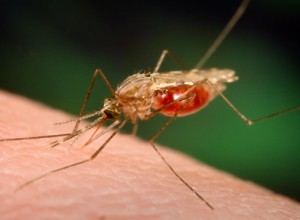New report signals progress on malaria elimination
 New estimates from the World Health Organisation (WHO) show a significant increase in the number of countries moving towards malaria elimination, with prevention efforts saving millions of dollars in healthcare costs over the past 14 years in many African countries.
New estimates from the World Health Organisation (WHO) show a significant increase in the number of countries moving towards malaria elimination, with prevention efforts saving millions of dollars in healthcare costs over the past 14 years in many African countries.
According to the report dubbed “World Malaria Report 2015”, released on Wednesday, and made available to the Ghana News Agency by Fadela Chaib, WHO Communications Officer, more than half (57) of the 106 countries with malaria in 2000 had achieved reductions in new malaria cases of least 75 per cent by 2015.
It said across sub-Saharan Africa, the prevention of new cases of malaria has resulted in major cost savings for endemic countries.
New estimates presented in the WHO report show that reductions in malaria cases attributable to malaria control activities saved an estimated $900 million in case management costs in the region between 2001 and 2014.
It observed that insecticide-treated mosquito nets contributed to the largest savings, followed by artemisinin-based combination therapies, and indoor residual spraying.
“Since the start of this century, investments in malaria prevention and treatment have averted over six million deaths,” said Dr Margaret Chan, WHO Director-General, and added, “We know what works. The challenge now is to do even more.”
The report said for the first time since WHO began keeping score, the European Region is reporting zero indigenous cases of malaria.
It said this achievement was made possible through strong country-level leadership, technical support from WHO, and financial assistance from the Global Fund to Fight AIDS, Tuberculosis and Malaria.
The report said since 2000, the malaria mortality rate had declined by 72 per cent in the WHO Region of the Americas, 65 per cent in the Western Pacific Region, and 64 per cent in the Eastern Mediterranean Region.
“While the African Region continues to carry the highest malaria burden, here too there have been impressive gains: over the last 15 years, malaria mortality rates fell by 66 per cent among all age groups, and by 71 per cent among children under five, a population particularly susceptible to the disease.”
It said country-level and regional progress in malaria control is reflected in global disease trends; adding “since 2000, malaria incidence and death rates have fallen by 37 per cent and 60 per cent, respectively, around the world.”
The report said among children under five, malaria death rates have declined by 65 per cent; an estimated 6.2 million deaths had been averted since 2000; adding that Target 6C of the Millennium Development Goals, which aimed to halt and reverse the global incidence of malaria between 2000 and 2015, had been achieved.
It said substantial progress had also been made towards the 2005 World Health Assembly target of a 75 per cent reduction in the global burden of malaria by 2015; pointing out that the progress had resulted, in large part, from the massive deployment of effective and low-cost malaria control interventions.
According to the report, since 2000, nearly one billion insecticide-treated mosquito nets had been distributed in sub-Saharan Africa; and by 2015, about 55 per cent of the population in this region was sleeping under mosquito nets, up from less than two per cent coverage in 2000.
It said rapid diagnostic tests had made it easier to swiftly distinguish between malarial and non-malarial fevers, enabling timely and appropriate treatment.
The report said a sharp increase in diagnostic testing for malaria had been reported in the WHO African Region: from 36 per cent of suspected malaria cases in 2005 to 65 per cent of cases in 2014.
It said artemisinin-based combination therapies (ACTs), introduced widely over the past decade, have been highly effective against P. falciparum, the most prevalent and lethal malaria parasite affecting humans.
It said an estimated 663 million cases of malaria had been averted in sub-Saharan Africa since 2001, as a direct result of the scale-up of three key malaria control interventions: insecticide-treated mosquito nets, indoor residual spraying and artemisinin-based combination therapy.
The report said mosquito nets had had the greatest impact, accounting for about 68 per cent of cases prevented through these interventions.
The World Malaria Report, released each year in December, is WHO’s flagship malaria publication. It offers an in-depth analysis of trends in malaria control and elimination at global, regional and country levels.
It is developed in collaboration with WHO regional and country offices, Ministries of Health in endemic countries, and a broad range of partners.
This year’s report draws on data from 96 countries and territories with ongoing malaria transmission, and from five countries that recently eliminated malaria.
Source: GNA
